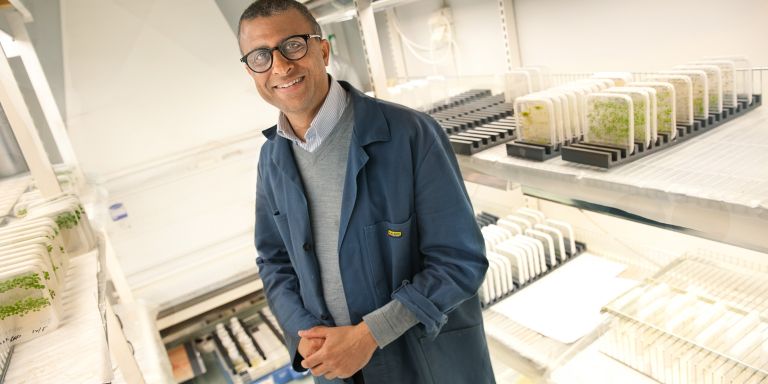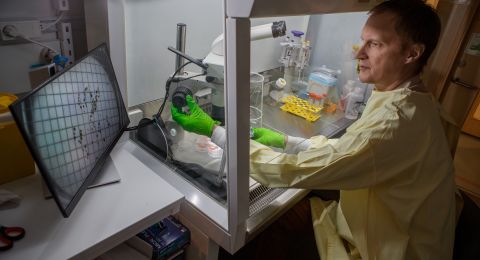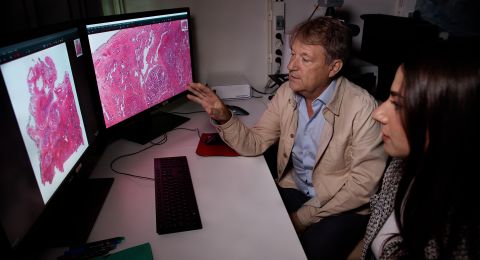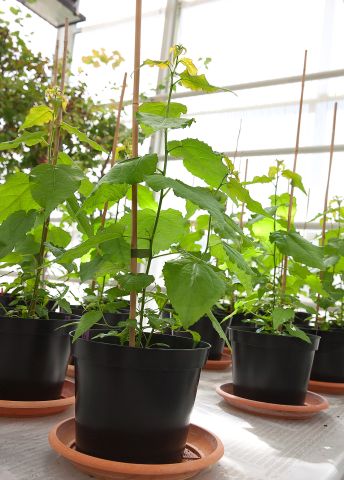
Project Grant 2014
Understanding the environmental regulation of the annual growth cycle in trees
Principal investigator:
Professor Rishikesh Bhalerao
Institution:
Swedish University of Agricultural Sciences
Grant in SEK:
SEK 39.7 million over five years
In the secure entrance room, he puts on a protective coat and shoe protection, and enters the glasshouse containing genetically modified plants at Umeå Plant Science Centre (UPSC). Thousands of plants are grown there under various research projects. Humidity, temperature and light are all controlled to meet the needs of the various experiments.
“This was one of Sweden’s first certified glasshouses for genetically modified plants. The plants never leave the glasshouse, and all staff working here must have a license,” Rishikesh explains.
First, he presents a more traditional glasshouse with glass walls and roof, and then he opens the door to a plant room with artificial lighting. All plants in the room are one-year-old aspen, currently experiencing conditions equivalent to Swedish high summer.
Rishikesh examines the top shoot of one of the half-meter tall aspen saplings.
“Look, here are the buds that will form next year’s leaves,” he says.
Rishikesh’s fascination with broadleaf trees is so much a part of him that at first he cannot explain it. Trees go green in the summer and take on autumn hues before losing their leaves as winter approaches. How do they do it?
That question is occupying Rishikesh on a full-time basis. He has been awarded a five-year grant by the Knut and Alice Wallenberg Foundation to study how trees know when it is time to grow or rest for the winter.
Earlier research at UPSC has shown that trees have an internal clock that is affected by when the sun rises and sets. Heat and cold also play a part. But question marks remain about many mechanisms at cell level. Which genes are involved in the various processes, which signals trigger each individual process?
Good model plants
Plant research at Umeå began using mouse-ear (or thale) cress (Arabidopsis thaliana) as a model plant. It is a weed, and the most frequently studied of all plants.
“Mouse-ear cress has simple DNA, a short life cycle, and produces large numbers of seeds. This makes it suitable for use as a model system. It is a kind of banana fly for plant research,” Rishikesh explains.
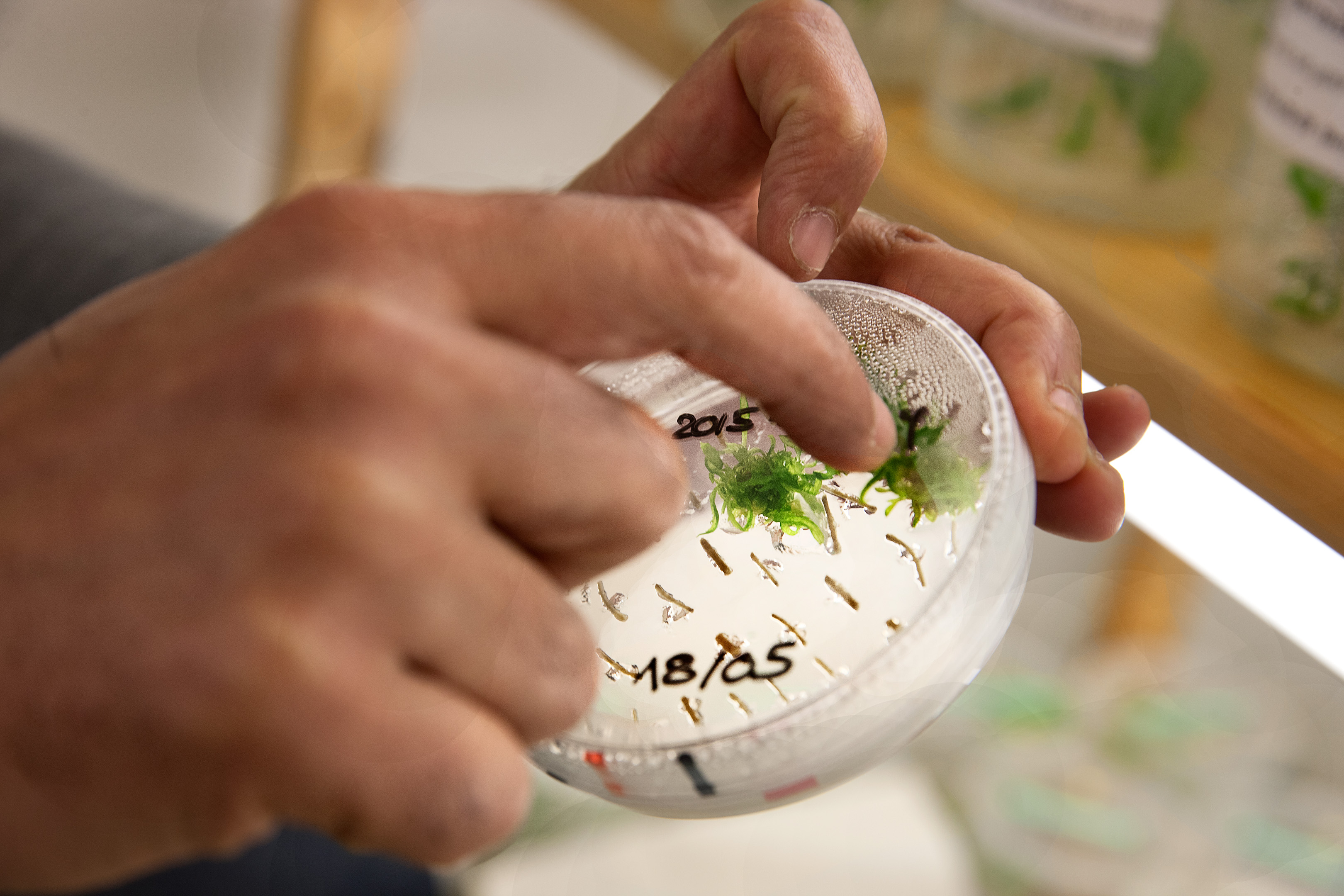
A perennial species, such as a tree, was needed to study the relationship between growth and dormancy. Aspen (Populus tremula) was an obvious choice for the researchers at Umeå, since its DNA has already been mapped.
“It is also fairly easy to genetically modify,” Rishikesh adds.
The genes are inserted in the plant cell’s DNA with the help of a soil bacterium. Fragments of the aspen stem are dipped in a bacterial solution, and placed on dishes containing nutrients. Later they are transferred to plastic containers, where they are allowed to grow before being planted in pots containing compost. The whole procedure takes about six months.
The gene expression is changed in various ways in each series of plants.
There are some 20 species of aspen in total, but the study is using a hybrid between a Swedish and an American aspen.
“We are trying to find the molecular components involved in foliation; we think they are the same genes as those controlling flowering in mouse-ear cress.”
Trees choose a conservative lifestyle
Rishikesh obtained a PhD in Plant Molecular Biology at Umeå University in 1993, and was a postdoc at the Max Planck Institute for Plant Breeding Research in Cologne, Germany. He returned to Umeå as team leader for a research project at the Swedish University of Agricultural Sciences.
It was no coincidence that he found his way to Umeå, where he could team up with fellow researchers who were pioneers in identifying the genetic information in trees.
Rishikesh is impressed by the ability of trees to adapt to their environment. They can continue to grow in the same place for hundreds of years without being able to seek shelter from drought or cold.
Broadleaf trees at our latitudes can cope with temperatures from more than 25°C in summer to -40°C in winter. How is this possible? Rishikesh explains that trees prefer a conservative lifestyle. They have found a perfect balance between survival and growth. They stop growing as the days become shorter.
“The timing depends on location. In Umeå growth stops after mid-July. Further north in Kiruna, for example, trees may stop growing much earlier.”
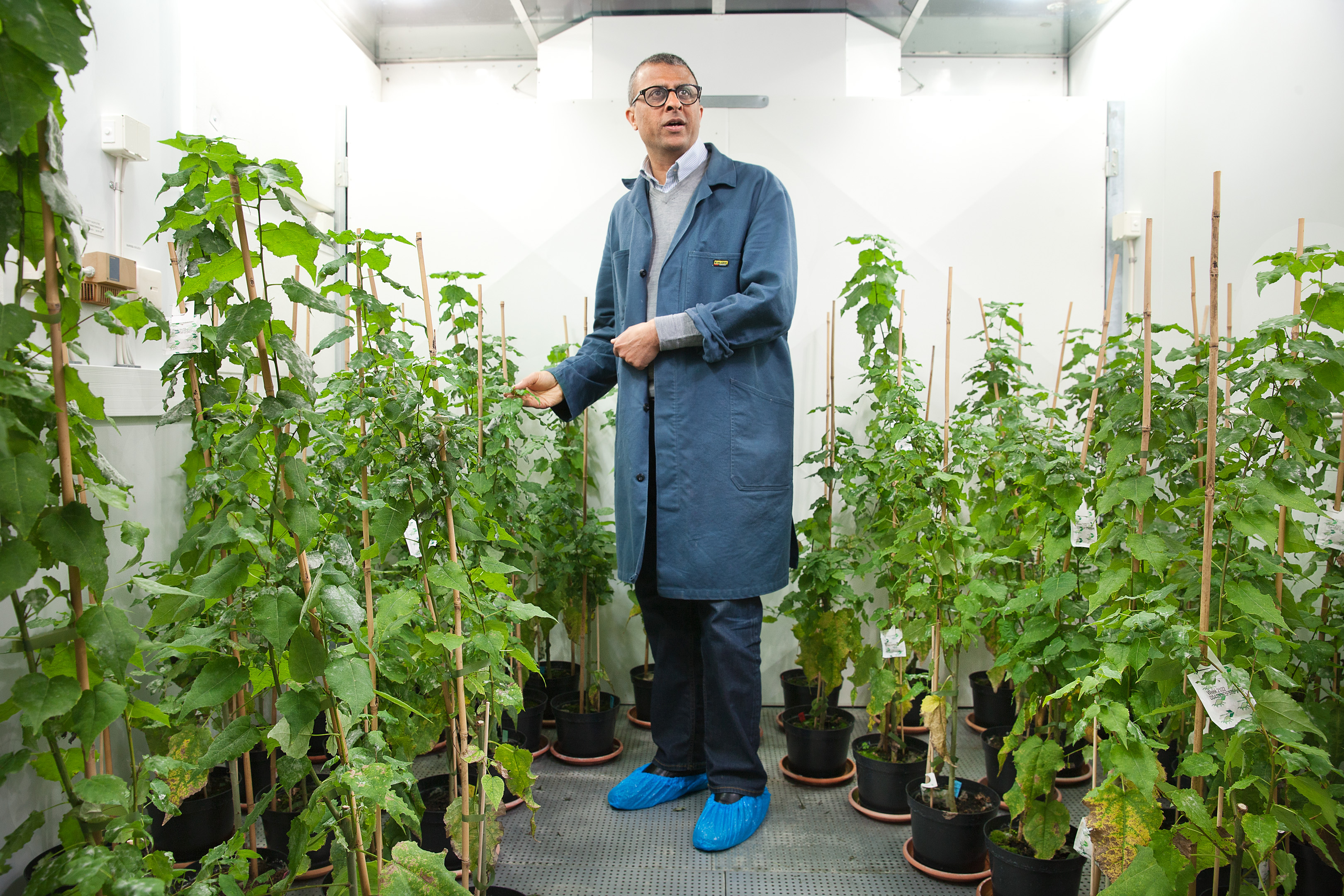
Transgenic trees with a longer season
His research team has already identified genes that extend the growing season by a month or more, and received permission from the Swedish Board of Agriculture to plant genetically modified hybrid aspens outdoors. Trials began last year and yielded encouraging results.
We will be conducting more field trials in this new project. It will be extremely interesting to see whether our discoveries in the lab work out in the forest,” Rishikesh muses.
Broadleaf trees are easier to study than conifers. Aspen DNA is only a fraction of that of spruce, but the principles are probably the same.
“When we have obtained basic knowledge about aspen, we will be able to take the next step and study how it works with spruce, which is important to the Swedish economy. How can production be made more profitable?”
Text Carin Mannberg-Zackari
Translation Maxwell Arding
Photo Magnus Bergström
